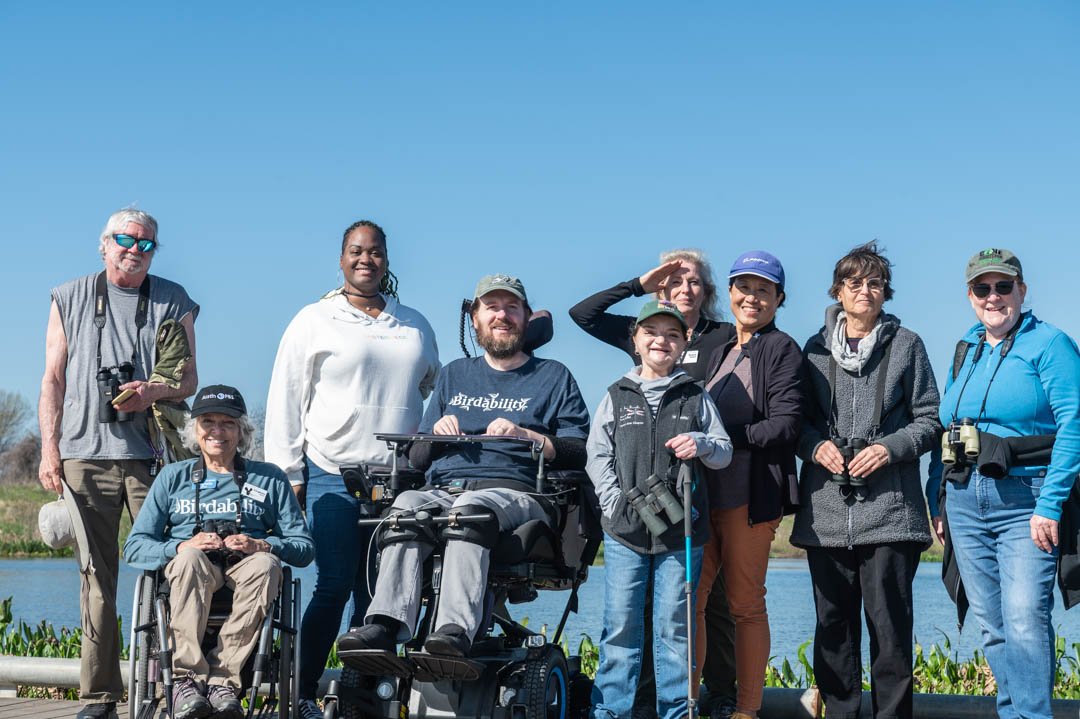
Leading Accessible and Inclusive Bird Outings
Planning Your Outing
Engage with Participants:
Gather input from individuals with disabilities and health concerns.
Understand various access features that aid in inclusivity, beyond physical access.
Familiarize yourself with equity and inclusion principles.
Location Selection:
Choose accessible locations with flat terrain, sit spots, and rest areas.
Ensure the area is welcoming and free from historical safety concerns.
Detailed Information:
Provide comprehensive details ahead of time about the outing, including physical terrain, potential hazards, and amenities.
Use inclusive language and accessible communication methods.
During the Outing
Welcoming Environment:
Share pronouns and welcome access needs.
Make a welcoming statement, acknowledging Indigenous lands and caretakers.
Set community agreements on language and interactions.
Pacing and Participation:
Move at the pace of the slowest participant and take regular breaks.
Offer assistance only when requested, and respect individual needs.
Ensure everyone knows that bird identification is a group activity and not the only goal.
Inclusivity in Action:
Provide quiet or sensory-specific spaces.
Have adaptive equipment on hand (digiscopes, monoculars, portable stools, etc.).
Include and support caregivers, as desired.
After the Event
Reflect and Process:
Spend 15-30 minutes after the outing for participants to journal or document their experiences creatively.
Gather feedback in various forms (written, verbal, anonymous) and respond with intention.
Continuous Improvement:
Regularly plan accessible and inclusive outings.
Seek feedback from individuals with diverse access needs to enhance future outings.
Commit to ongoing learning about inclusivity and equity.
Types of Accessible Outings
Flat and Easy Terrain: Regular sit spots and benches for breaks, shade if possible.
Car Birding: Birding from a vehicle or caravan.
Stationary Events: A big sit event, or use of a central point with short out-and-back trips.
Indoor Birding: Utilizing nature centers, indoor bird blinds, or window views with bird feeders.
Resources for Further Learning
Birdability Website Documents:
Access Considerations
Inclusive Language
Writing Event Descriptions
Welcoming and Inclusive Birders
Steps to Inclusive Outings
Interacting with Wheelchair Users
Understanding Neurodiversity
Adaptive Birding Equipment
Other Recommended Resources:
Mass Audubon’s All Persons Trail Guides
Feminist Bird Club’s Principles
Katrina Clark’s Pedagogy of a Bird Walk video
ABA’s Code of Ethics for Birders
Right to Be’s Resources on Interrupting harassment and abuse
Field Inclusive’s Checklist for Accessible Fieldwork
